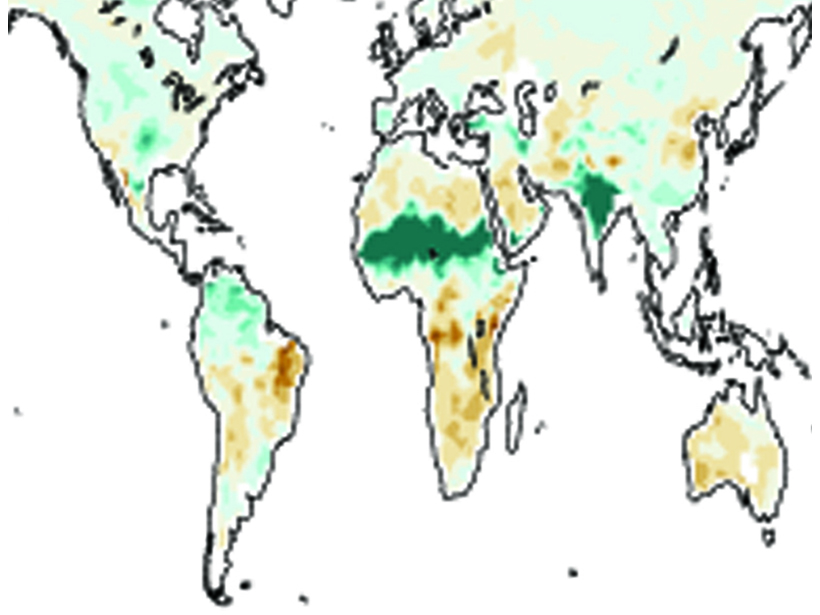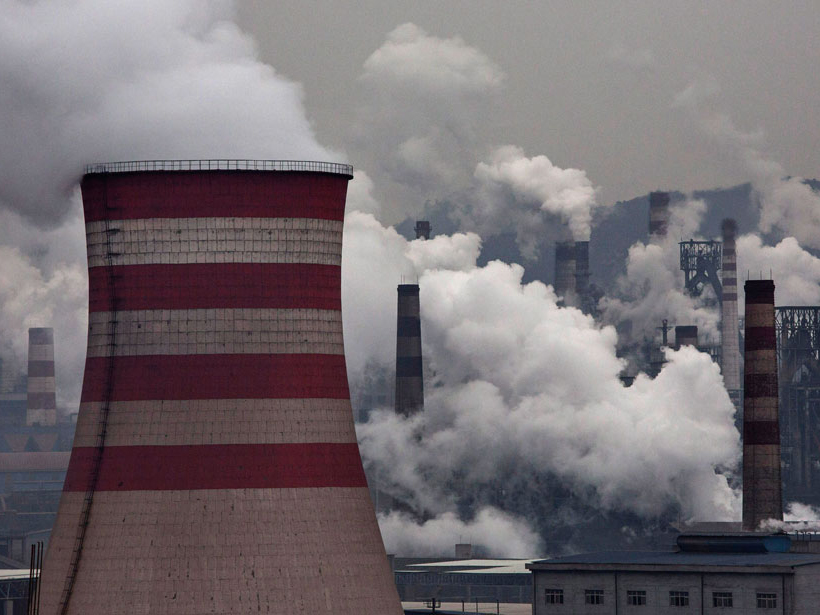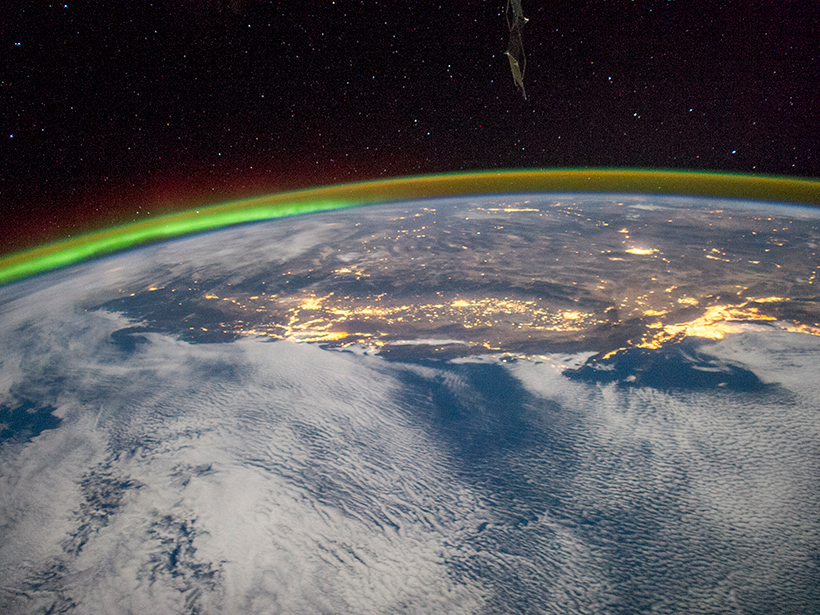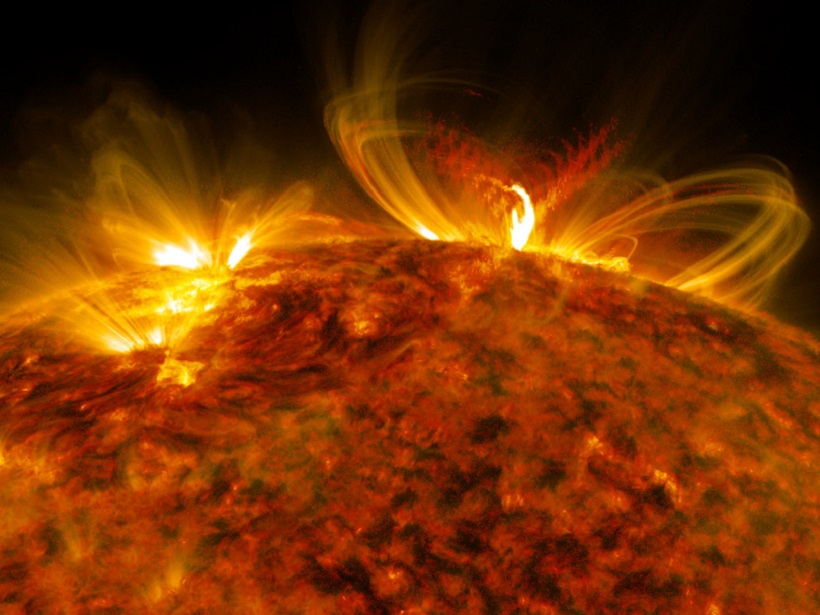A reexamination of the global water cycle shows that tropical coastlines exert a profound influence on atmospheric water circulation by wringing water vapor from the atmosphere.
everything atmospheric
Wet Soils Elevate Nighttime Temperatures
Soil moisture can elevate overnight temperatures, offsetting daytime cooling, especially over areas of strong land-atmosphere interactions.
Tracing Electric Currents That Flow Along Earth’s Magnetic Field
A new study uses satellite data to examine a worldwide system of electric currents in greater detail than ever before.
Atmospheric Particles Aren’t the Same Cloud Seeds They Once Were
Still, more than half of the seeds required for cloud droplets to form in both the present-day and preindustrial atmospheres are made by trace gases that condense to form minute aerosol particles.
How Will Climate Change Affect the United States in Decades to Come?
A new U.S. government report shows that climate is changing and that human activities will lead to many more changes. These changes will affect sea levels, drought frequency, severe precipitation, and more.
Imaging the Sun’s Atmosphere
The technique of heliospheric imaging could be valuable for future space weather operations.
Pollution over Southeast Asia May Threaten Ozone Health
Emissions of short-lived chlorine-based chemicals that deplete ozone are increasing worldwide. But over some regions of Asia, these chemicals may be on a fast track to the ozone layer.
Carlton, Horowitz, Vecchi, and Wood Receive the 2017 Atmospheric Sciences Ascent Award
Annmarie Carlton, Larry W. Horowitz, Gabriel Vecchi, and Robert Wood will receive the 2017 Atmospheric Sciences Ascent Award at the 2017 American Geophysical Union Fall Meeting, to be held 11–15 December in New Orleans, La. The award recognizes research contributions by “exceptional mid-career (academic, government, and private sector) scientists in the fields of atmospheric and climate sciences.”
Is There a Greenhouse Effect in the Ionosphere, Too? Likely Not
Controversial observations of long-term changes in the ionosphere appear to be explained by the Sun’s 11-year cycle of activity, not human greenhouse gas emissions.
A Wake-up Call from the Sun
A sudden burst of activity from the Sun in early September 2017 caused a wide range of space weather effects at Earth.









